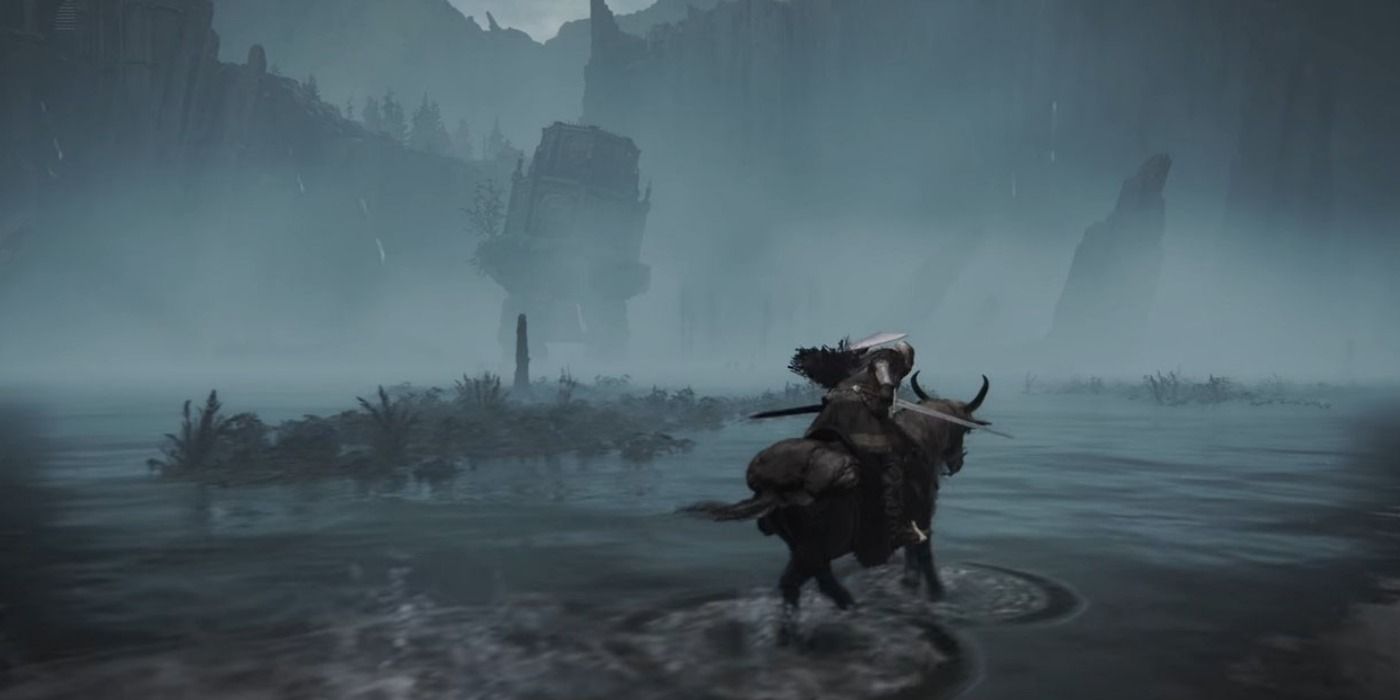Unlike Dark Souls’ mostly linear paths, Elden Ring allows players freedom to explore whichever parts of the map they desire, and with that, comes doubts about what the “best path” is. In a game hailed for its intense difficulty, players are going to want every advantage they can get, and exploring The Lands Between out of a certain order can see players in areas way out of line with their current level. To avoid the frustration of getting one-shot by basic overworld enemies, players should be sure to thoroughly explore each area before moving on to the next.
In Elden Ring, there are five main areas in the overworld, with more lurking in the lands underground. The primary five are Limgrave, Liurnia, Caelid, Altus Plateau, and then Moutaintops of the Giants, each with its own set of unique enemies and challenges. However, within those areas, it can be sometimes difficult to ascertain whether or not the players are meant to be there at that time and their current level.
Players will begin their Elden Ring journey in Limgrave, and it is a vastly open area with plenty of nooks and crannies to explore. Filled to the brim with smaller dungeons, overworld bosses, Evergaol boss encounters, and more, Limgrave is an amazing place in Elden Ring for a fledgling Tarnished to learn the ropes of The Lands Between. Once Limgrave is explored, players will have the option of venturing to Stormveil Castle or visiting the unforgiving Caelid, that is unless they were transported there suddenly from the Dragon-Burnt Ruins. Players will have an easier time exploring Stormveil and beating the two required bosses there, which will lead them to the next area, Liurnia.
Elden Ring: Notable Landmarks in The Land Between

Liurnia dials up the difficulty in Elden Ring a little more than Limgrave, but in a much more manageable sense than Caelid in the east. The legacy dungeon there also is on similar difficulty levels to Stormveil Castle, but filled with mages rather than melee-based enemies. They can be tricky in groups, but singled out, it sh0uld make the area frustration-free. After exploring Liurnia, the options are either Caelid or the Altus Plateau, and Caelid should be the third area explored. Filled with scarlet rot and disturbing dog enemies, Caelid is a tough area, but at this point, the player should have accrued enough levels to be on par with the enemies here. Finally, players should make their way to the Altus Plateau and follow the map linearly from there, venturing to the Mountaintops of Giants afterward.
Using this path, players may find an easier time when dealing with the increasingly threatening enemies that Elden Ring has to offer. If explored without care, players will notice enemy health bars reach gargantuan levels while taking far less damage than ones found in Limgrave. Don’t fear, that’s simply due to their scaling and not anything the player has done wrong.
If players find themselves hitting a wall in Elden Ring, exploration is their best friend. Finding that one extra Sacred Tear could be the difference between living through their next boss encounter. Similarly, while exploring, players will find their runes rapidly increasing, allowing them to finally deal the extra bit of damage necessary to make them go from killing enemies in three hits to two. Taking a methodical approach to each land will lead to the discovery of mines with more smithing stones for upgrades, dungeons with bosses that reward helpful spirits that can be summoned, and much more, but exploring the lands in this order may help players avoid hitting early walls.
Elden Ring is available on PlayStation 4, PlayStation 5, Xbox One, Xbox Series X|S, and PC.




